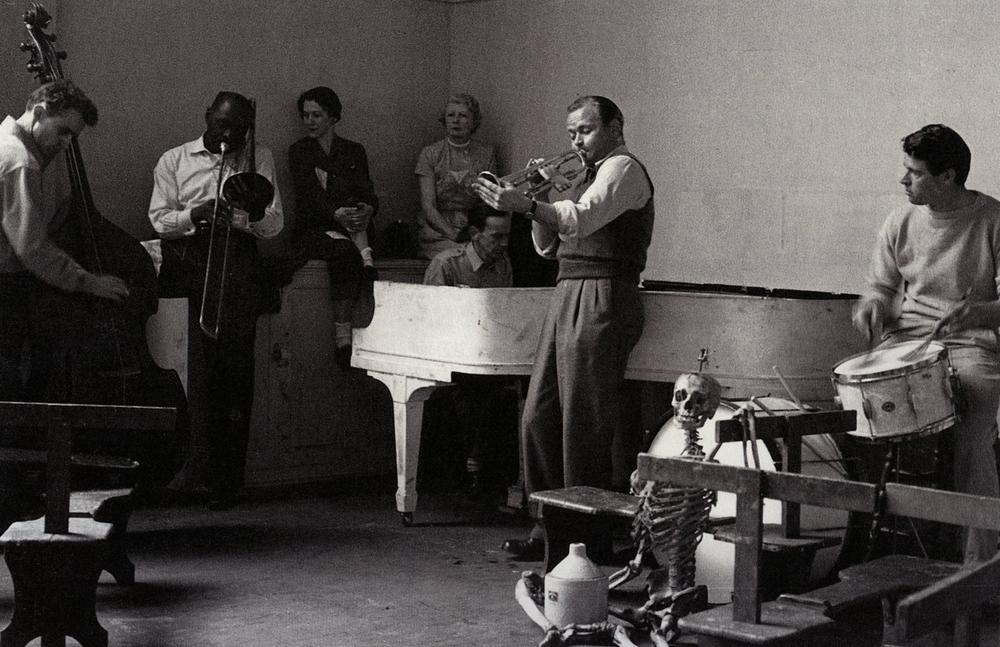Elmer Bischoff. From War to Art School

When Elmer Bischoff returned from World War II, he took a position at the California School of Fine Arts (now San Francisco Art Institute), where he taught from 1946 to 1952, joining fellow veterans—faculty and students alike—in what the artist described as a “monastic brotherhood composed of members recently liberated from a world of semi-darkness.”1 A radical turn was underway at the school led by director Douglas MacAgy, who introduced an experimental curriculum that encouraged individual expression, a way out of the disciplinary rule of the armed forces and of repressed emotions. MacAgy allowed studios to be open twenty-four hours a day and organized raucous parties with live music by the faculty’s Studio 13 Jazz Band. The frenzied energy had not yet formed a style, but fed on a desire to express what Bischoff called “an expanded notion of humanness.”2 As MacAgy assembled a faculty of painters—Bay Area-based Richard Diebenkorn, Frank Lobdell, David Park, Hassel Smith, along with Clyfford Still and his New York colleagues Mark Rothko and Ad Reinhardt, who came to San Francisco to teach summer sessions—their investigations into gestural, expressive painting catalyzed Abstract Expressionism on the West Coast.